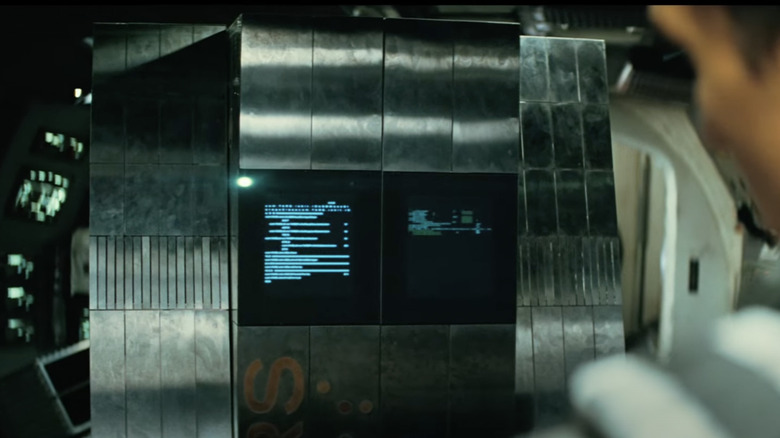What TARS From Interstellar Looks Like In Real Life
Following the success of his "Dark Knight" trilogy, Christopher Nolan switched genres to craft a modern-day sci-fi classic. Released in 2014, "Interstellar" is wonderfully shot, even if it is filled with confusing moments. Despite that, the Matthew McConaughey-led pic emerged as a major success, grossing over $645 million worldwide. Set in a distant future where Earth's crops are dying, the film follows Cooper (McConaughey) on a perilous mission through time and space to save Earth and reunite with his daughter, Murph (Mackenzie Foy).
Upon its release, the film was praised for its rousing emotional narrative and distillation of strong scientific ideas. To help tell his story in a scientifically appropriate manner, Nolan consulted theoretical physicist Kip Thorne to ensure Coop's mission was logical and accurate. While "Interstellar" does take liberties and get some of its science wrong, many of the film's bold ideas are rooted in authenticity and plausibility. One of the more interesting ideas that Nolan showcases is the futuristic robot, TARS, who helps the humans on their missions.
While speaking with the Associated Press (via Detroit News), Nolan opened up about how he wanted a practical, minimalistic robot. "I referred to them as 'articulated machines' because I wanted my crew and everybody to stop thinking of your standard idea of a robot," he said. "My idea was to remove any trace of anthropomorphism, so it doesn't have a face. It doesn't have arms and legs." In true Nolan fashion, TARS and the other robots "articulated machines" weren't brought to life via CGI, but instead by masterful puppetry and someone who is a familiar face to "Law & Order: SVU" fans.
Bill Irwin is the voice and puppet master behind TARS
The iconic "Interstellar" robot is voiced by "Law & Order: SVU" star Bill Irwin, a veteran comedian and Broadway performer who is known for his physicality and clown work. In addition to voicing TARS, Irwin also performed the puppetry for the robot. Yes, Christopher Nolan and his team actually built TARS (and the other robot, CASE) from scratch in a way that could be controlled by a human. Irwin, of course, is not a robot, and TARS (as well as CASE) look nothing like the performer who brought them to the big screen.
While speaking with Vulture, Irwin candidly opened up about the entire process, explaining just how difficult it was to control a huge robot made out of sheet metal. "We would push this thing around. At first it was a matter of gripping a cable that you'd have to grip hard," Irwin said about the early prototype. Eventually, the process became much simpler, with Irwin described it as going "from squeezing the breaks on an old bicycle to playing a video game."
The "puppet" stood around five feet tall and needed considerable effort to be controlled. "You operated it from behind," Irwin explained, "pushing it, meaning you were attached at the chest and each ankle, so you could push various parts of it, and your hands are on the controls in the back of the machine."

